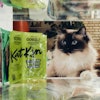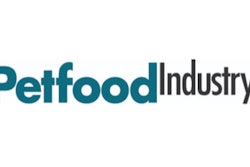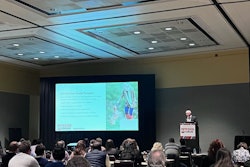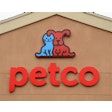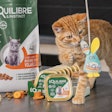
Pet food, treats and other products accounted for 39% of Nestle’s overall online sales across all industries around the world in 2022, according to Euromonitor International. Within the pet segment, Purina made up 90% of Nestlé’s online pet care sales. Purina PetCare sales increased each quarter in 2022. Euromonitor shared this data in their presentation “Mastering E-commerce Growth.” Beyond Purina, the pet care industry’s e-commerce penetration rate grew by nearly 10% from 2019 to 2020 as the pandemic forced people online.
The end of the pandemic seems likely to reduce e-commerce expansion overall. While Euromonitor recorded a 29% growth spurt for online retail across all industries in 2020, the market research firm forecasts 2023 will see 6% e-commerce growth globally. The return to the old normal isn’t the only factor slowing online sales growth. Inflation and weaker economies in many nations have influenced e-commerce as well. Nevertheless, Euromonitor analysts forecast that e-commerce will drive 47% of retail industry growth by 2027.
E-commerce seems poised to continue growing because consumers have numerous options for buying products online and ready availability of devices to make those purchases on. For example, Nestle sells pet foods and treats on a range of retailers, including Amazon, Chewy, Walmart, PetSmart and Zooplus. These e-commerce retailers offer a variety of ways to get product purchased online too, such as buying online to pick-up in store or direct home delivery. The range of options presents opportunities for pet food e-commerce strategies to appeal to consumers’ various needs.
About Nestle Purina PetCare
Long a leader in the U.S. market, Nestlé Purina also operates pet food factories in 19 countries, according to Petfood Industry’s Top Company’s Current Data. Nestlé Purina claims three headquarters globally: St. Louis, Missouri, USA, for its North American and Latin American operations; Lausanne, Switzerland, in Europe; and Sydney, Australia, covering Asia, Oceania and Africa. Its parent company, Nestlé's world headquarters, is in Vevey, Switzerland. Purina PetCare’s annual revenue reached US$16.5 billion in 2021.
Although challenged by supply chain issues, Purina PetCare was the largest contributor to Nestle’s organic growth in 2022, adding a third year to a streak of double-digit growth. That success may have contributed to the company’s pet food supply constraints, said one executive during Nestle’s full year results conference call on Feb. 14. Purina’s sales in fiscal year 2022 reached US$19.385 billion (CHF18,101 million) up from US$16.659 billion (CHF15,556 million) in FY21. Purina Petcare organic growth was 14.5% in FY22 with Pro Plan, Purina ONE and Fancy Feast leading.
“PetCare does stand out as the one category that delivered over and above. No question about it,“ Mark Schneider, chief executive officer of Nestlé, said in a press release.

